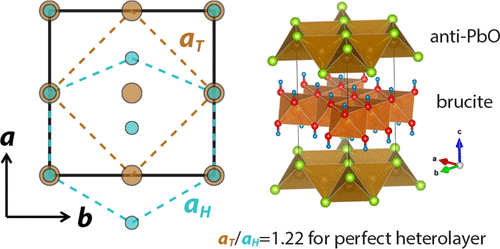当前位置:
X-MOL 学术
›
Chem. Mater.
›
论文详情
Our official English website, www.x-mol.net, welcomes your feedback! (Note: you will need to create a separate account there.)
Isotope Effect between H2O and D2O in Hydrothermal Synthesis
Chemistry of Materials ( IF 8.6 ) Pub Date : 2020-01-16 , DOI: 10.1021/acs.chemmater.9b04121 Xiuquan Zhou 1 , Luning Wang 1 , Xiulin Fan 2 , Brandon Wilfong 1, 3 , Sz-Chian Liou 4 , Yi Wang 1 , Huafei Zheng 1 , Zhange Feng 5 , Chunsheng Wang 2 , Efrain E. Rodriguez 1, 3
Chemistry of Materials ( IF 8.6 ) Pub Date : 2020-01-16 , DOI: 10.1021/acs.chemmater.9b04121 Xiuquan Zhou 1 , Luning Wang 1 , Xiulin Fan 2 , Brandon Wilfong 1, 3 , Sz-Chian Liou 4 , Yi Wang 1 , Huafei Zheng 1 , Zhange Feng 5 , Chunsheng Wang 2 , Efrain E. Rodriguez 1, 3
Affiliation

|
Synthetic chemists can use different solvents (for example, polar vs nonpolar) to affect solute–solvent interactions and therefore favor a particular reaction product. Using a different isotope of the same solvent to select the product, however, is uncommon. We find that water and heavy water (D2O) can select different products in the hydrothermal syntheses of iron-containing solids. Under hydrothermal and anaerobic conditions, water oxidizes iron to evolve hydrogen gas and a mixture of Fe2+- and Fe3+-containing solids. When we replace D2O for H2O under identical hydrothermal conditions, we can select thermodynamic products in our syntheses of iron-containing solids, whether it be oxides or chalcogenides. To explain this remarkable difference in product selectivity, we discover an unexpected difference in a fundamental property between H2O and D2O: their standard reduction potentials. Through electrochemical measurements and under strongly basic conditions (pH = 14), we find that the reduction potential of D2O is 109 mV lower than that of H2O. This difference in the reduction potential cannot be explained by the simple Nernst formulation. The unique product selectivity of D2O over H2O allows us to prepare iron chalcogenides with structures relevant to the iron-based superconductors.
中文翻译:

水热合成中H 2 O和D 2 O之间的同位素效应
合成化学家可以使用不同的溶剂(例如,极性溶剂与非极性溶剂)来影响溶质与溶剂的相互作用,因此偏爱特定的反应产物。然而,使用相同溶剂的不同同位素来选择产物并不常见。我们发现水和重水(D 2 O)在含铁固体的水热合成中可以选择不同的产物。在水热和厌氧条件下,水将铁氧化以释放出氢气以及含Fe 2+和Fe 3+的固体混合物。当我们用D 2 O代替H 2时在相同的水热条件下,我们可以在合成含铁固体中选择热力学产物,无论是氧化物还是硫属元素化物。为了解释这种产物选择性的显着差异,我们发现了H 2 O和D 2 O之间的基本性质之间的意外差异:它们的标准还原电位。通过电化学测量并在强碱性条件下(pH = 14),我们发现D 2 O的还原电位比H 2 O的还原电位低109 mV 。这种还原电位的差异无法通过简单的能斯特公式来解释。D 2 O对H 2的独特产物选择性O使我们可以制备具有与铁基超导体相关的结构的硫属硫化铁。
更新日期:2020-01-17
中文翻译:

水热合成中H 2 O和D 2 O之间的同位素效应
合成化学家可以使用不同的溶剂(例如,极性溶剂与非极性溶剂)来影响溶质与溶剂的相互作用,因此偏爱特定的反应产物。然而,使用相同溶剂的不同同位素来选择产物并不常见。我们发现水和重水(D 2 O)在含铁固体的水热合成中可以选择不同的产物。在水热和厌氧条件下,水将铁氧化以释放出氢气以及含Fe 2+和Fe 3+的固体混合物。当我们用D 2 O代替H 2时在相同的水热条件下,我们可以在合成含铁固体中选择热力学产物,无论是氧化物还是硫属元素化物。为了解释这种产物选择性的显着差异,我们发现了H 2 O和D 2 O之间的基本性质之间的意外差异:它们的标准还原电位。通过电化学测量并在强碱性条件下(pH = 14),我们发现D 2 O的还原电位比H 2 O的还原电位低109 mV 。这种还原电位的差异无法通过简单的能斯特公式来解释。D 2 O对H 2的独特产物选择性O使我们可以制备具有与铁基超导体相关的结构的硫属硫化铁。



























 京公网安备 11010802027423号
京公网安备 11010802027423号